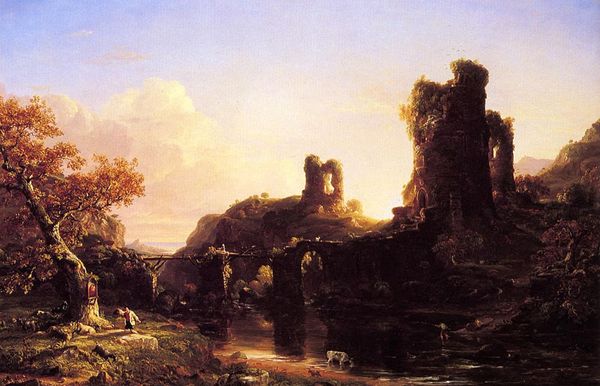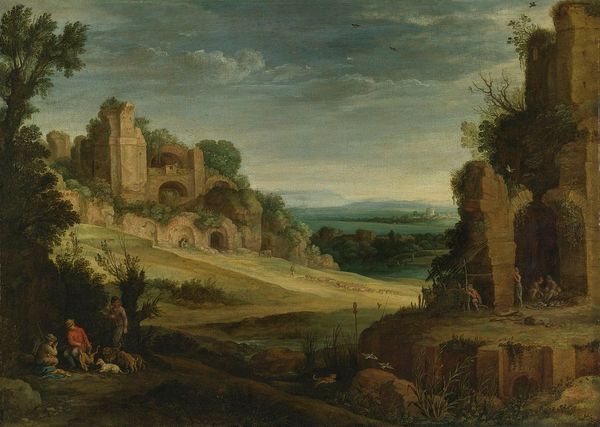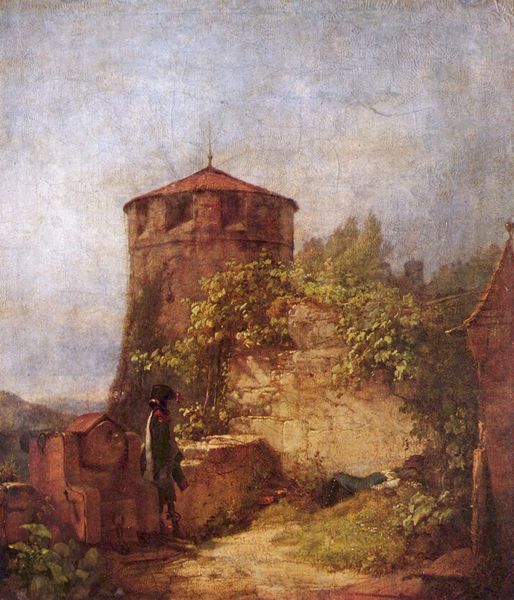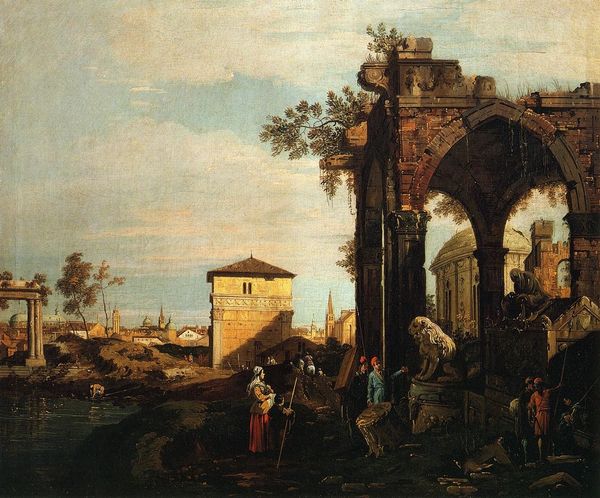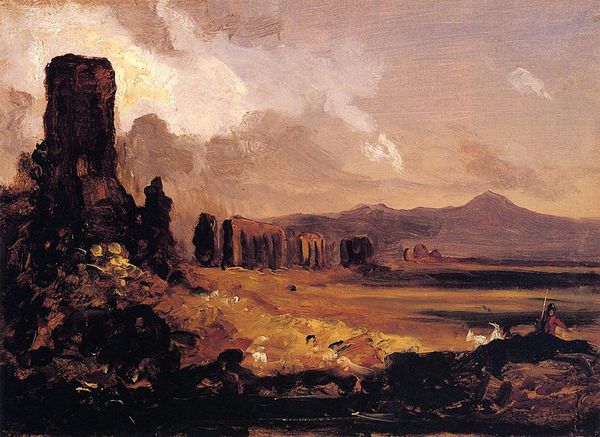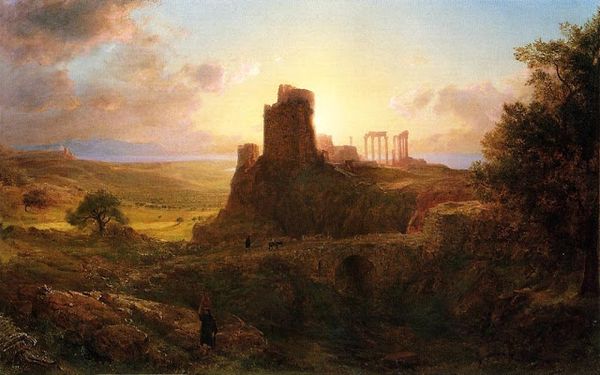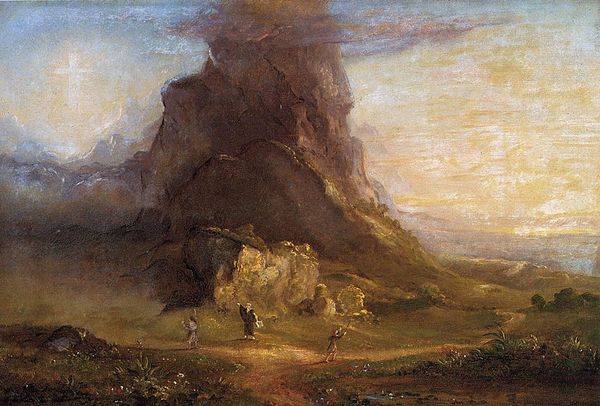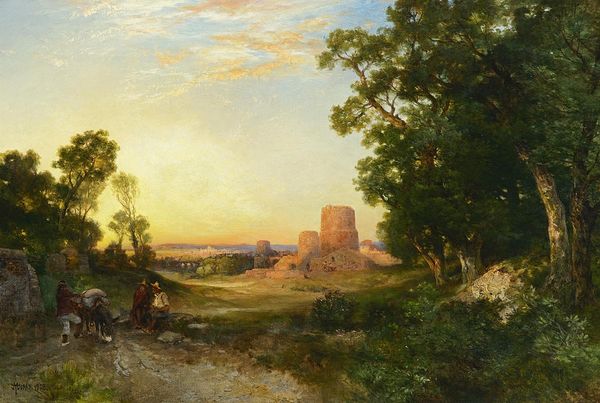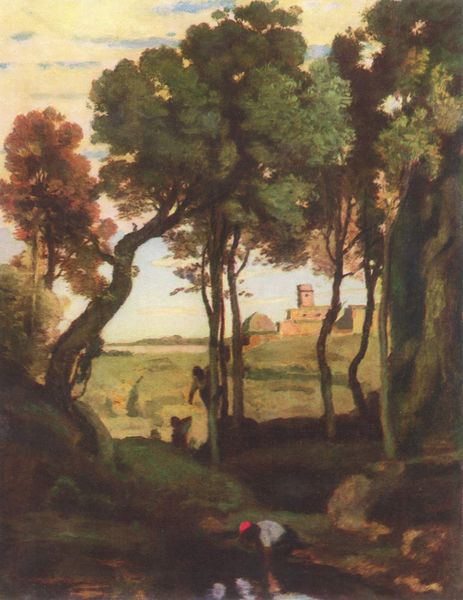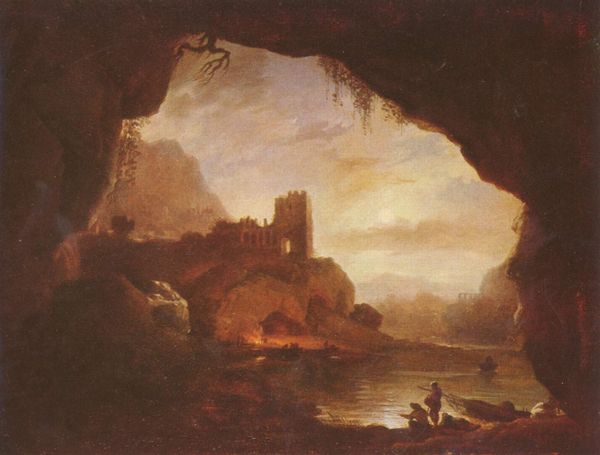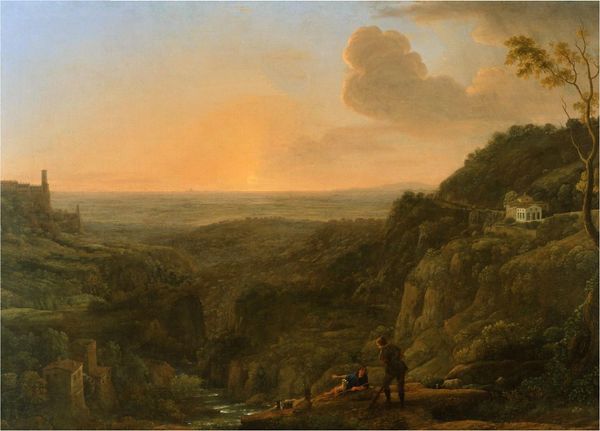
painting, oil-paint
#
baroque
#
painting
#
oil-paint
#
landscape
#
oil painting
#
cityscape
#
genre-painting
#
history-painting
#
realism
Copyright: Public domain
Curator: Good morning. We're looking at "Ruins at the Sea," an oil painting that resides here in the Budapest Museum of Fine Arts attributed to Jan Dirksz Both. Editor: It has such a somber atmosphere. That crumbling architectural form dominates, doesn’t it? A silent sentinel of a bygone era. Curator: Indeed. Structurally, the artist employs a clear division, a tripartite arrangement. Observe the distinct foreground featuring figures and immediate landscape; the midground, emphasizing the ruin; and finally, the atmospheric perspective evident in the background's sky and distant sea. Editor: The ruin acts as a potent symbol. Decay is the universal language, speaking of lost glory and the transience of human achievement, which resonates with a sort of elegiac emotion. I see this often with Romantic painters later. Curator: Yes, and consider the color palette – subdued tones and ochres across the whole painting but punctuated with small moments of local color in the figures’ garments. It's carefully orchestrated to guide the eye and highlight the interplay of light and shadow across these fragmented architectural components. Editor: Absolutely, and there's a narrative implied here as well. These individuals amidst the ruins become allegories themselves. Perhaps a moment of contemplation of historical weight, or a romantic idealizing of simplicity? Curator: Quite possibly. Both certainly invokes elements typical of history and genre paintings. The organization of the picture plane relies upon geometric construction with an almost mathematically structured arrangement of masses and voids. Editor: It evokes that longing to touch something from the past, and brings with it a wistful acknowledgment of what once was. You know, ruins serve as containers for collective memories. Curator: Very astute, it truly is a convergence of artistic methods. Both synthesizes various aspects to present not just a scene, but really a meditation on the passage of time. Editor: Thank you for pointing out that connection, really seeing this work anew with you today. Curator: A pleasure. There’s an entire visual logic that the artist invites us to investigate.
Comments
No comments
Be the first to comment and join the conversation on the ultimate creative platform.
